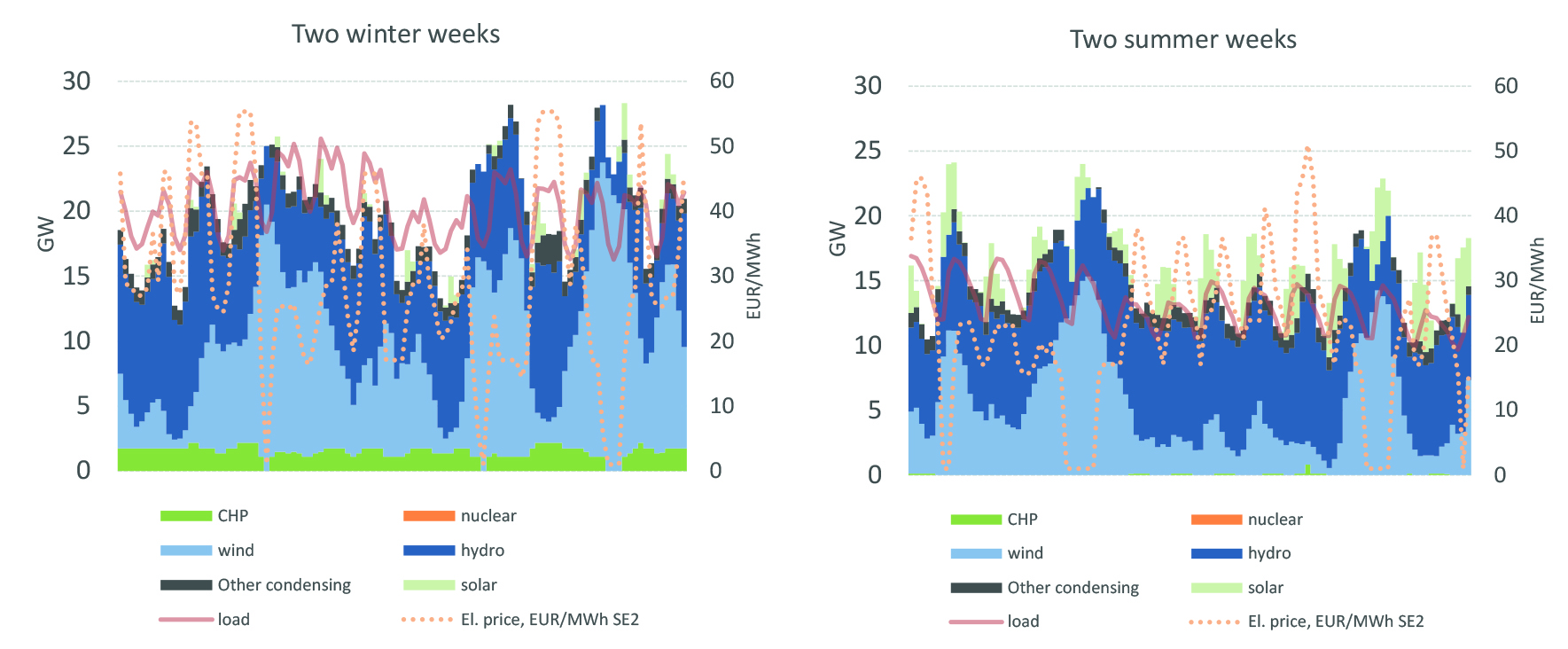



Within this research field we consider the issues that are crucial to the implementation and acceptance of an ambitious and successful large-scale integration of renewable electricity. The research focuses on wind and solar power, and deals with various topics, including the interplay between wind power and other electricity generation technologies, such as thermal power and hydropower. We also study the Europe-wide consequences on the marginal costs of electricity generation with significant penetration of variable renewable electricity, as well as on efficient strategies to allocate wind power across the EU.
Increasing the penetration of variable renewable electricity (vRES) is, of course, beneficial from a climate-policy point of view but will present new challenges to the electricity system that need to be addressed properly. This includes a change in the dispatch, and thus profitability, of conventional thermal power plants, a need for secure back-up capacity and an increase in forecast errors in the time of delivery. Furthermore, new requirements on the transmission and distribution grids are likely in order to accommodate increasing volumes of vRES. Even though challenging, most issues are likely to be solvable. However, the integration of vRES must proceed in such a way that necessary system services (ancillary services) for a stable and secure operation of the electricity system are considered and properly valued. Demand flexibility and electricity storage are two components that will become increasingly important in the ongoing transformation of the electricity system.
Increased volumes of vRES will lead to increased variability in electricity prices. Prices will change as a result of not only electricity demand, but also as a result of wind conditions and/or solar irradiation. We will probably see hours with very high prices that are followed by hours with very low prices also during winter (see Figure below for an example). Especially in situations with a large wind and solar production (during summer) we may have to absorb large volumes of cheap electricity and the export capabilities will be used to its limits. In other periods, we may have to rely to a significant import of electricity. This assumes, during such periods, that neighbouring countries or regions have the necessary capacity and/or better weather conditions for electricity production.

Figure: Sample of an EPOD model result for Sweden during two winter weeks (left) and two summer weeks (right) in a future where all existing nuclear power has been replaced by wind power (60 TWh annually) and solar power (10 TWh annually).